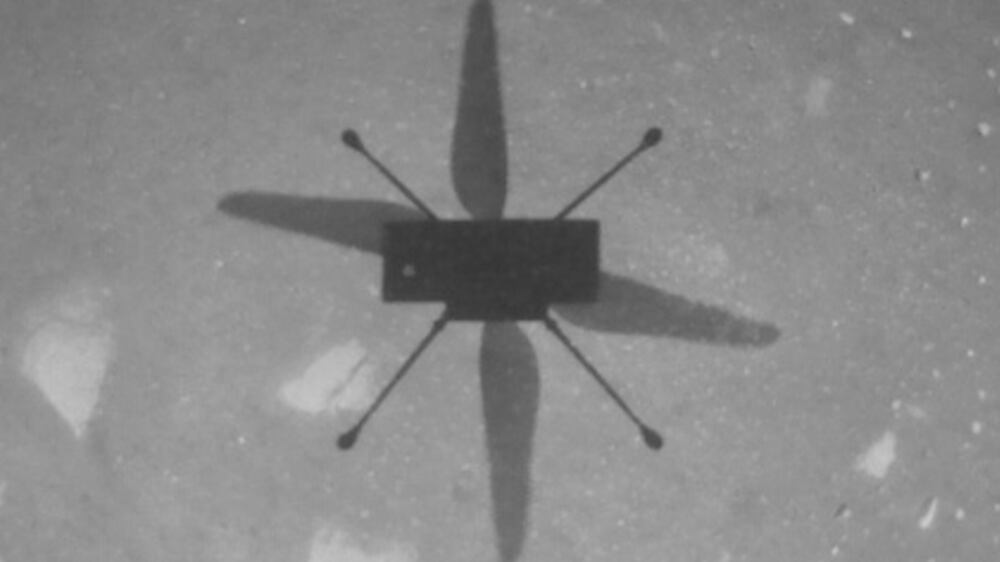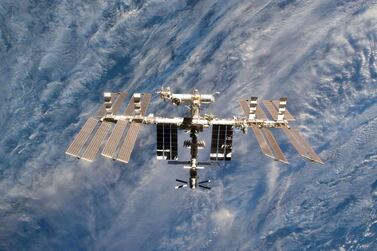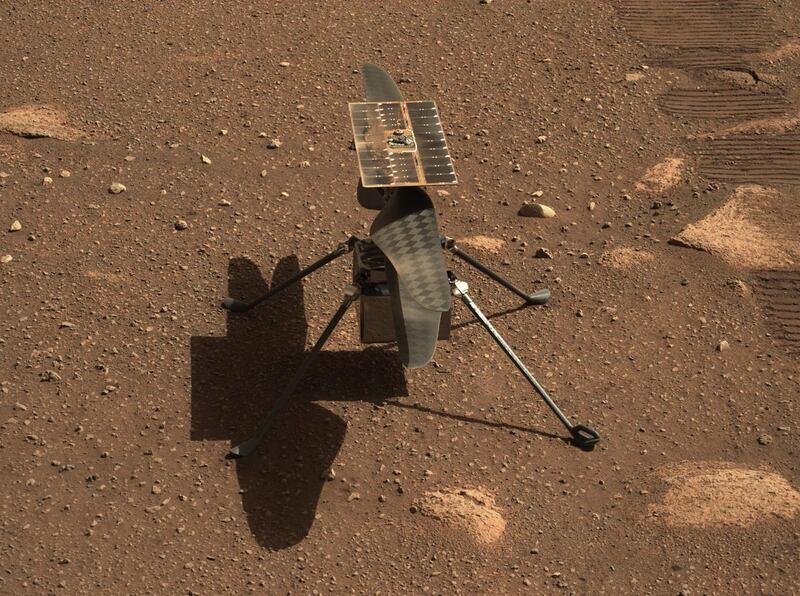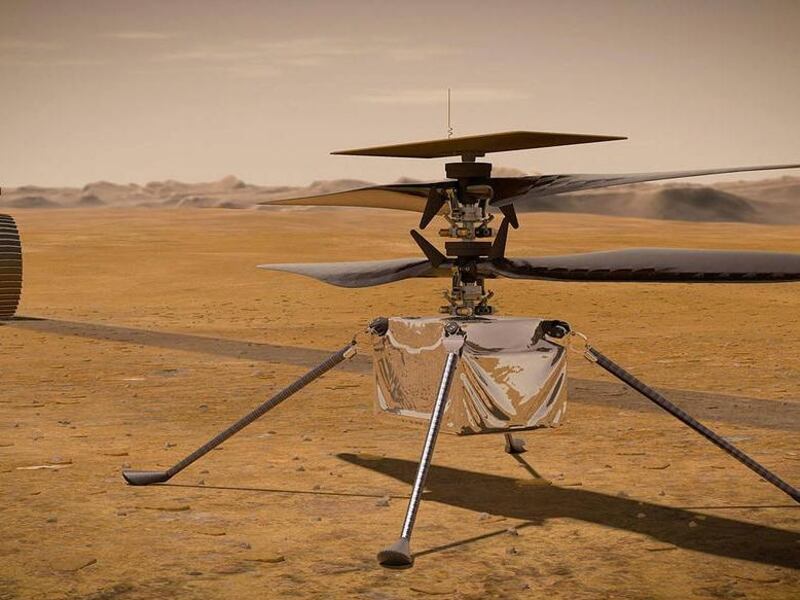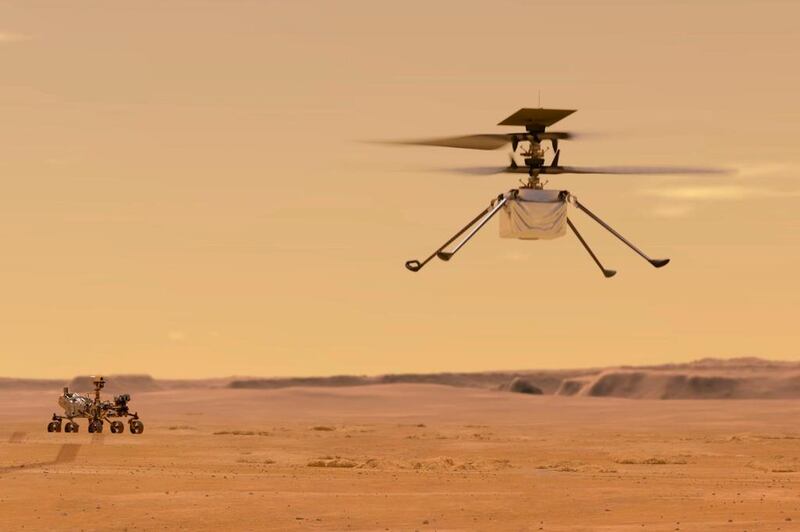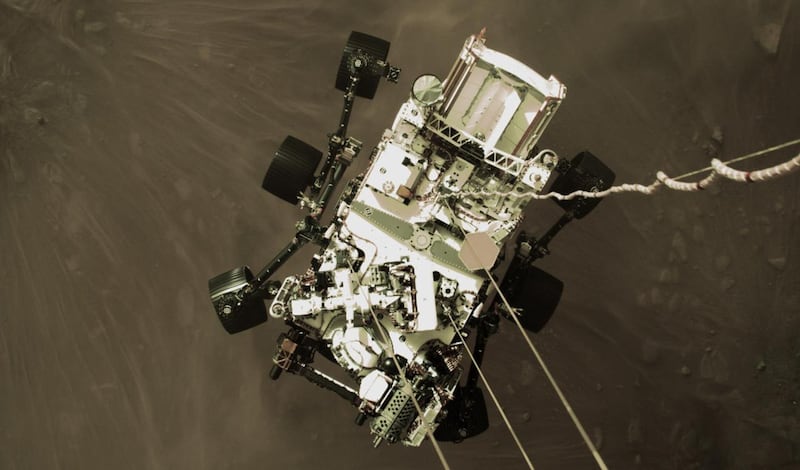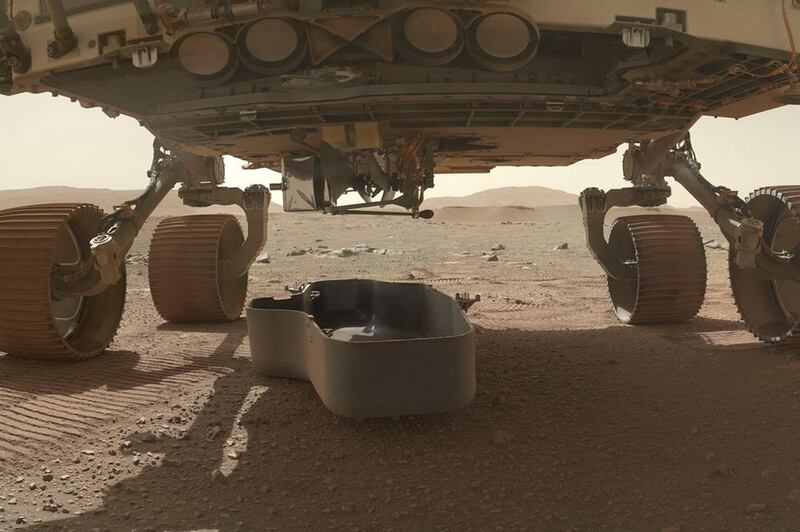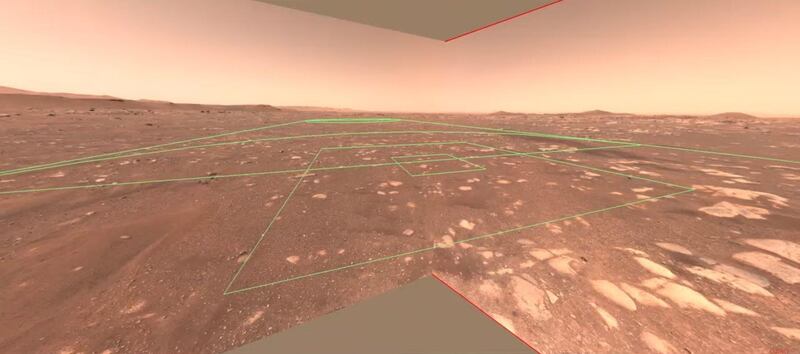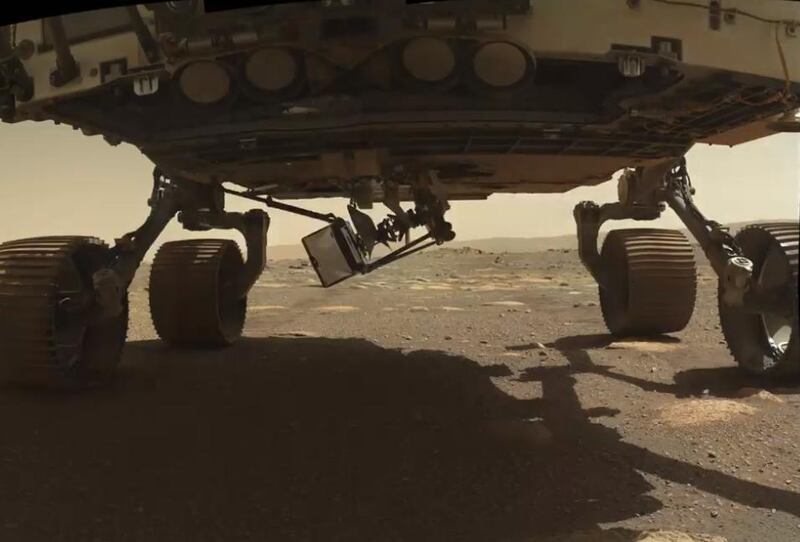Nasa’s Ingenuity helicopter completed its first flight on Mars on Monday, data from the mission showed, in a landmark moment for space exploration.
Engineers at the Jet Propulsion Laboratory, where the helicopter was designed and built, endured a nervous wait as telemetry from the helicopter arrived on Earth after it travelled about 289 million kilometres from Mars.
The data showed that Ingenuity had lifted off from the surface of Mars as planned, completing a task many compared to the first powered flight on Earth in 1903.
You wouldn’t believe what I just saw.
— NASA's Perseverance Mars Rover (@NASAPersevere) April 19, 2021
More images and video to come...#MarsHelicopterhttps://t.co/PLapgbHeZU pic.twitter.com/mbiOGx4tJZ
An image taken by one of the helicopter’s onboard cameras showed it hovering above the Red Planet.
The Perseverance rover, which carried Ingenuity to Mars, was positioned near the flight zone in the Jezero Crater to capture more imagery of the test flight, relaying back a short video of the helicopter in flight.
The team of engineers and scientists behind the Ingenuity celebrated as the data came in.
Lead Engineer MiMi Aung said: "We can now say that humans have flown a rotorcraft on another planet.
"We've been talking so long about our Wright brothers moment on Mars, and here it is," she said.
An earlier flight attempt was delayed by a software glitch, but engineers were able to solve the problem from Earth and instructed the helicopter to take off early on Monday.
The flight plan involved the helicopter climbing to three metres above the surface and hovering for 30 seconds in the thin Martian atmosphere, before landing back on the surface. In all, Ingenuity logged a total of 39.1 seconds of flight.
The Ingenuity helicopter was designed to prove that flight on Mars is possible.
While Mars has much less gravity to overcome than Earth, its atmosphere is only 1 per cent of the volume of that of the Earth, presenting a special challenge for aerodynamic lift.
Nasa's Ingenuity helicopter warms up on Mars before first flight
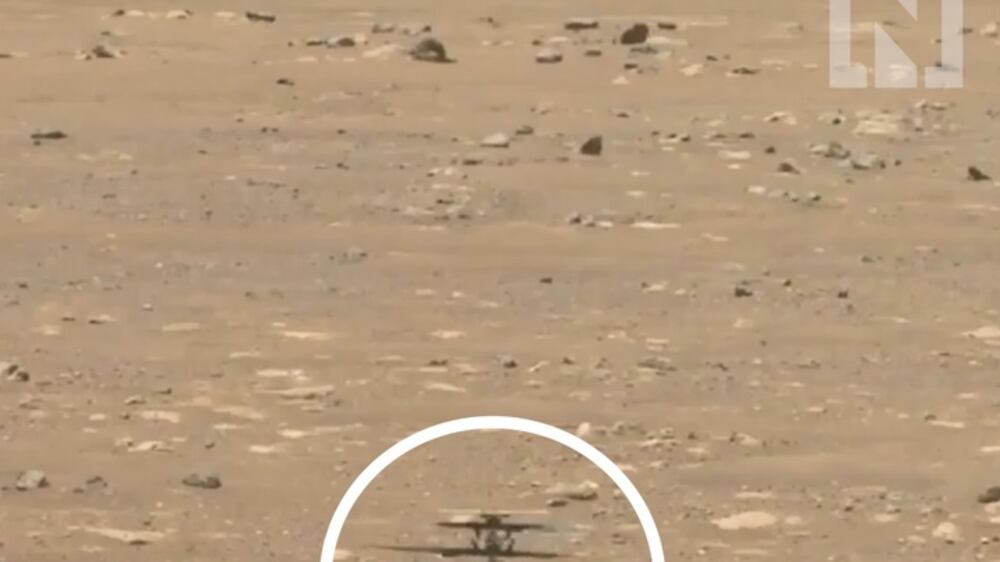
To compensate, engineers equipped Ingenuity with rotor blades that are larger and spin much faster than would be needed on Earth for an aircraft of its size.
The design was successfully tested in vacuum chambers built at the Jet Propulsion Lab to simulate Martian conditions.
Ingenuity will undertake several more flights of increasing complexity and length over the next weeks, between rest periods of four to five days as it recharges its batteries.
Nasa hopes Ingenuity will pave the way for efforts to explore the planets and moons of the solar system from the "air", including Mars and Saturn’s moon, Titan.
"We will take a moment to celebrate our success and then take a cue from Orville and Wilbur regarding what to do next," said Ms Aung. "History shows they got back to work – to learn as much as they could about their new aircraft – and so will we.”
